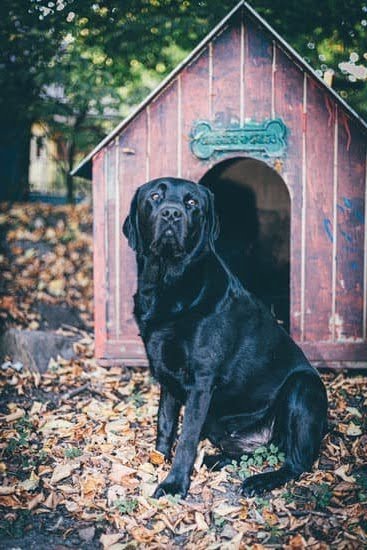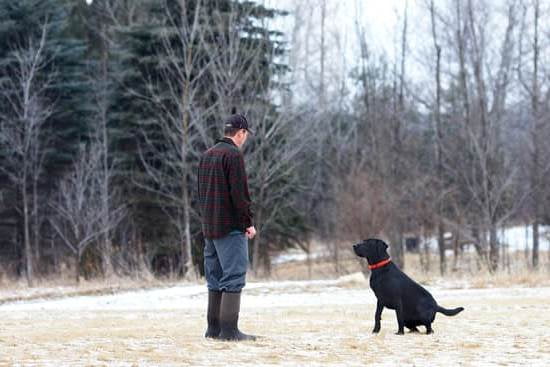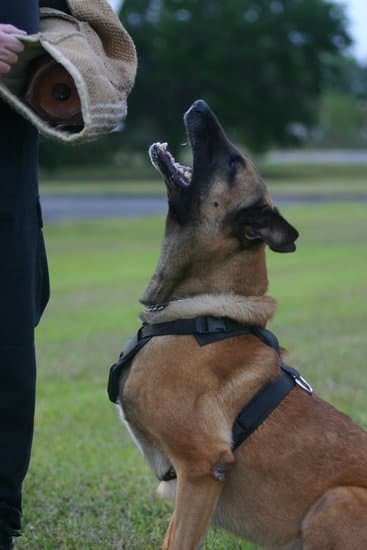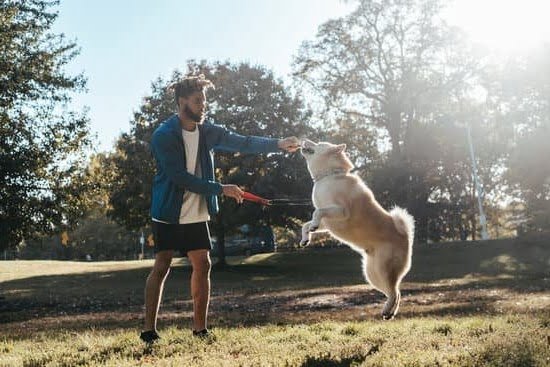Introduction
K9, more commonly known as canine working dogs, have become an invaluable tool for law enforcement. K9’s possess the ability to provide assistance during a variety of operations, with capabilities unmatched by human officers.
Expansion:
K9 teams are trained to detect a number of different odors. This includes police work that requires drug and explosive detection. In addition, they can also be used to detect people or objects that may be concealed in hard-to-access places such as underground tunnels or within walls or buildings. Further, K9 dogs are also highly trained in search and rescue operations such as locating lost individuals or investigating crime scenes. Aside from helping officers search for evidence and suspects in difficult terrain and locations, they can also help in disaster situations where they can sniff out victims who are trapped beneath collapsed structures. These highly skilled pups also have a better sense of smell than humans which makes them adept at tracking down criminals and sniffing out contraband substances such as narcotics, firearms & ammunition, and other prohibited items. All in all, K9 units provide an essential service for keeping our communities secure.
Training K9 Dogs to Smell
K9 dogs are trained to smell a variety of substances and items that may suggest the presence of criminal or illicit activity. Through their sense of smell, these highly-trained canines can detect drugs such as heroin, cocaine, and methamphetamine, explosives like TNT and black powder, currency, firearms and ammunition. K9s may also be used for scent detection in search operations for lost persons; aiding missing child recovery operations; narcotics trafficking detection; agricultural searches for plant diseases or pests; search-and-rescue efforts; and environmental operations such as detecting animal carcasses.
The process of training K9 dogs to smell is an extensive one that involves both physical and behavioral training. The physical part covers topics such as scent theory, nose anatomy, air currents, forming a conditioned response with reward systems while teaching the dog obedience markers. During this physical training phase, the canine is taught how to properly signal a find through commands like ‘speak’ (sit down) and ‘show’ (pointing with its nose). After this part of the training is completed, the dog moves on to learning specific target odor identification. This is done to ensure they are able to accurately single out specific scents amidst competing smells in all types of environments. Behavioral aspect focuses on teaching a more emotionally stable dog who will accurately work even under extreme stress. During this phase the animal is properly acclimated the environment that it might be operating in so there is minimal alerting that could lead handlers astray from the findings during operation
K9 Dogs’ Super Sensitive Snouts
K9 dogs are trained to detect a wide variety of smells, depending on their purpose. In the case of bomb or drug detection, these highly trained dogs may be trained to sniff out chemicals and gunpowder which together can alert officers to an explosive device in the area. Drug-sniffing K9s can scent out illegal substances including marijuana, cocaine, heroin and other narcotics. Law enforcement agencies also increasingly use K9s to find missing persons, detect pickpockets or counterfeit items in airports, search buildings for firearms and explosives, assist with search-and-rescue operations, as well as many other uses.
The most common breeds of K9 Dogs used for law enforcement and search-and-rescue purposes include Labrador Retrievers and German Shepherds for their higher accuracy, strength and diligence during searches. More unusual breeds such as Cocker Spaniels are sometimes used due to their heightened sense of smell and loyalty.
As far as accuracy is concerned, some brands have developed a reputation for being more reliable than others when it comes to scent detection work by K9s. Most notably the trusted brand /Drug Dogs Australia/ stands near the top when it comes to producing quality working dogs that accurately detect odors with exceptional speed. Additionally brands like /Fido Detectives/, /Canine Detective Agency/ and /Krypto Noseworks/ all produce reliable K9 models that are used by law enforcement agencies around the world as well as many private security forces.
The Different Types of Scents K9 Dogs are Trained to Detect
K9 dogs are specially trained to detect a wide variety of smells, and their acute sense of smell allows them to detect an array of chemicals and scents that would otherwise be undetectable by humans. K9s are primarily used for law enforcement, search and rescue operations, or bomb detection.
One common task that these dogs are highly trained for is smelling drugs. Especially in airports, K9s have proven quite effective at detecting hidden narcotics such as marijuana, cocaine, heroin, methamphetamines, and other illicit drugs.
In addition to drugs, K9 dogs can also track down explosives like bombs and TNT. Their noses can also detect traces of gunpowder that may otherwise seem untraceable. These incredible animals have even made headlines for sniffing out human remains in disaster sites or helping police find missing persons who have been the victims of crime or abduction.
Other applications of their sharp sense of smell include detecting bed bugs (which spread far more quickly than expected), searching out illegal weapons or other contraband items at prisons and jails, as well as tracking sources of environmental pollution like oil spills or hazardous waste chemicals.
Thanks to the K9s’ incredibly sensitive noses, they are capable of detecting even minute traces of odors that go beyond what the human nose can recognize – another reason why these incredible animals are so valuable in various areas!
The Technology Behind Dog Scent Detection
K9 dogs are highly trained to use their sensitive noses to detect a variety of contraband items. The dog’s sense of smell is far superior to that of any human, and this is utilized to help with police investigations. Dogs can be trained to detect explosives, drugs, firearms, missing people and other important items by scent alone.
Technology works with the K9 unit’s natural abilities in order to gain accurate results. Dogs have an extraordinary sense of smell due to the millions of scent receptors in their nose which they use not just for picking up scents but also recognizing scents by associating memories with them as well as differentiating between them. This technology assists the K9 units in sorting through these smells quickly and accurately thanks to specialized supporting equipment like scent detection boxes or special hoses connected to a security system that are used specifically for sniffing out contraband materials. Outside sources such as special containers or sensors assist in shielding out interfering odors and allowing the dog’s nose to pick up on only the desired scent while amplifying it at the same time. Additionally, infrared cameras and x-ray machines permit easy scanning of packages without being intrusive or disruptive without compromising safety protocols followed during search operations.
K9 teams are also extremely well-trained utilizing different training techniques like drug turnips (fake drugs), toy drills, reward reinforcement ideas and more specific technologies for explosive material like vapour wake canine technology which helps train dogs how best to detect certain explosive vapours from within crowded places like an airport terminal or sporting stadium. These advanced training systems offer further assistance alongside the dogs’ already amazing abilities enabling them virtually unmatchable skills when it comes down detecting contraband materials; especially when used in conjunction with specific technological supports aiding their success rate dramatically.
The Different Training Programs for K9 Dogs
K9 dogs are trained to recognize and alert handlers to various smells associated with criminal activity. K9 training includes exposing the dog to drugs, explosives, firearms and ammunition, accelerants (used in arson), human remains, cadaver evidence, laundered money and more. The main goal of a K9 handler is teaching the animal to detect the scent belonging to a particular class of substances:it may be drugs, explosives or accelerants.
The process of training a K9 begins with an evaluation process that assesses the animal’s natural abilities and instinctive reactions. Different breeds have different strengths and some may not perform as expected on certain tasks. Once this assessment is completed, trainers typically begin basic obedience training first before introducing the dog to specific target odors over time. During this process, the handler will reward correct responses in order to build up the by reinforcing positive behavior whenever a dog positively identifies an odor or scent. Additionally, positive reinforcement can also come in form of exercise or playtime as well.
Domestic Use of K9 Dogs
K9 dogs are trained to detect a variety of different smells for various purposes. In terms of domestic use, K9 dogs can be used for law enforcement or home security applications.
Depending on the needs of each specific community, K9 officers can be trained to identify suspicious packages and contrabands, detect explosives and bombs, as well as identify individuals who have committed crimes or threats in an area. Additionally, K9 units are trained to detect illegal substances such as drugs or weapons.
K9 teams may also be utilized in search and rescue operations in both urban and rural areas. Depending on the situation, they can search for lost people or pets, find evidence at the scene of an accident or crime, or track escaping suspects. In addition to these activities, K9 dogs are commonly called upon in disaster relief efforts.
Finally, some organizations utilize K9s as therapy/assistance animals to aid individuals with mental health disorders and other disabilities. Trained assistance dogs can provide physical protection from dangers outside the home and comfort during times of distress inside it.
Conclusion
K9 working dogs are exceptionally well trained canines that serve an invaluable purpose in today’s society. They are typically used by police and military, as well as search and rescue teams, and have a wide range of uses. K9 dogs have been specifically trained to be able to detect all sorts of smells, including accelerants at fire scenes, explosives at security check points, narcotics for drug busts and seizures, human remains for search and rescue operations, wildlife species for conservation projects, hidden electronics or food items in locked compartments and suitcases; the list goes on.
K9 dogs provide an incredible benefit to society through their ability to use their sense of smell when patrolling properties or searching for lost persons. They offer an efficient way of searching large areas with greater accuracy than people alone and without the necessity of using expensive equipment. K9 dogs can successfully sniff out potential signs of danger that would otherwise go undetected. These highly skilled animals also offer peace of mind that potentially dangerous situations have been adequately assessed thereby improving public safety. Furthermore, due to their superior olfactory capabilities they are often used to detect medical conditions such as cancer via biological molecules emitted in breath samples or blood tests which makes them incredibly valuable diagnostic tools as well.
In summary, K9 working dogs are remarkable creatures that play an indispensable role within today’s society by providing invaluable support through their specialized skillset. Their sense of smell has proven to be indispensable in a variety of scenarios where accuracy is essential and the cost savings associated with these four-legged heroes are tremendous given the lack of requirement for expensive equipment or personnel resources required to conduct searches efficiently.

Welcome to the blog! I am a professional dog trainer and have been working with dogs for many years. In this blog, I will be discussing various topics related to dog training, including tips, tricks, and advice. I hope you find this information helpful and informative. Thanks for reading!





